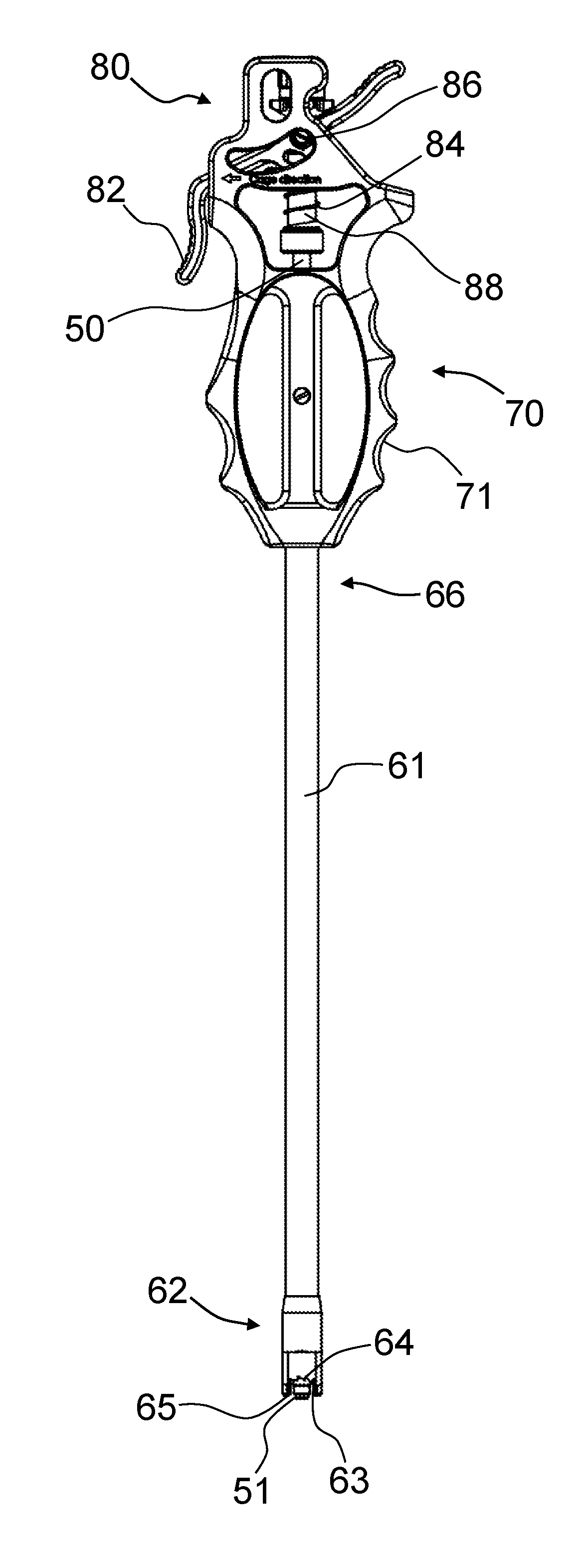Instrument for inserting a spinal implant and a spinal implant
a technology for applied in the field of spinal implants and operating instruments, can solve the problems of increasing the risk of nerve structures that must be passed through, cumbersome need for several tools, and affecting the safety of patients, and achieve the effect of causing as little trauma
- Summary
- Abstract
- Description
- Claims
- Application Information
AI Technical Summary
Benefits of technology
Problems solved by technology
Method used
Image
Examples
Embodiment Construction
[0045]The implant 11 in FIGS. 1, 2 and 3 has an elongated, slightly curved banana-shaped form with an upper side 12 and a lower side 13. A vertically extending passage opening 14 extends through the upper 12 and lower side 13 of the implant 11, said passage opening 14 extending in the central region of the implant 11 and serving to receive bone material and for better ossification. Due to their cage-like appearance, such implants 11 are also referred to as “cages”.
[0046]Furthermore, there are grooves 16 and mandrels 17 on the upper 12 and lower side 13 of the implant 11, which serve to improve the fixing of the implant 11. The grooves are arranged obliquely in order to bring the implant 11 into a radius and finally into the 90° position when it is inserted.
[0047]The two lateral ends 20, 21 of the implant 11 are different. The implant 11 is chamfered on one lateral end 20, the front end, and the upper 12 and lower side 13 extend towards one another. This end 20 is formed to be wedge-...
PUM
 Login to View More
Login to View More Abstract
Description
Claims
Application Information
 Login to View More
Login to View More - R&D
- Intellectual Property
- Life Sciences
- Materials
- Tech Scout
- Unparalleled Data Quality
- Higher Quality Content
- 60% Fewer Hallucinations
Browse by: Latest US Patents, China's latest patents, Technical Efficacy Thesaurus, Application Domain, Technology Topic, Popular Technical Reports.
© 2025 PatSnap. All rights reserved.Legal|Privacy policy|Modern Slavery Act Transparency Statement|Sitemap|About US| Contact US: help@patsnap.com



